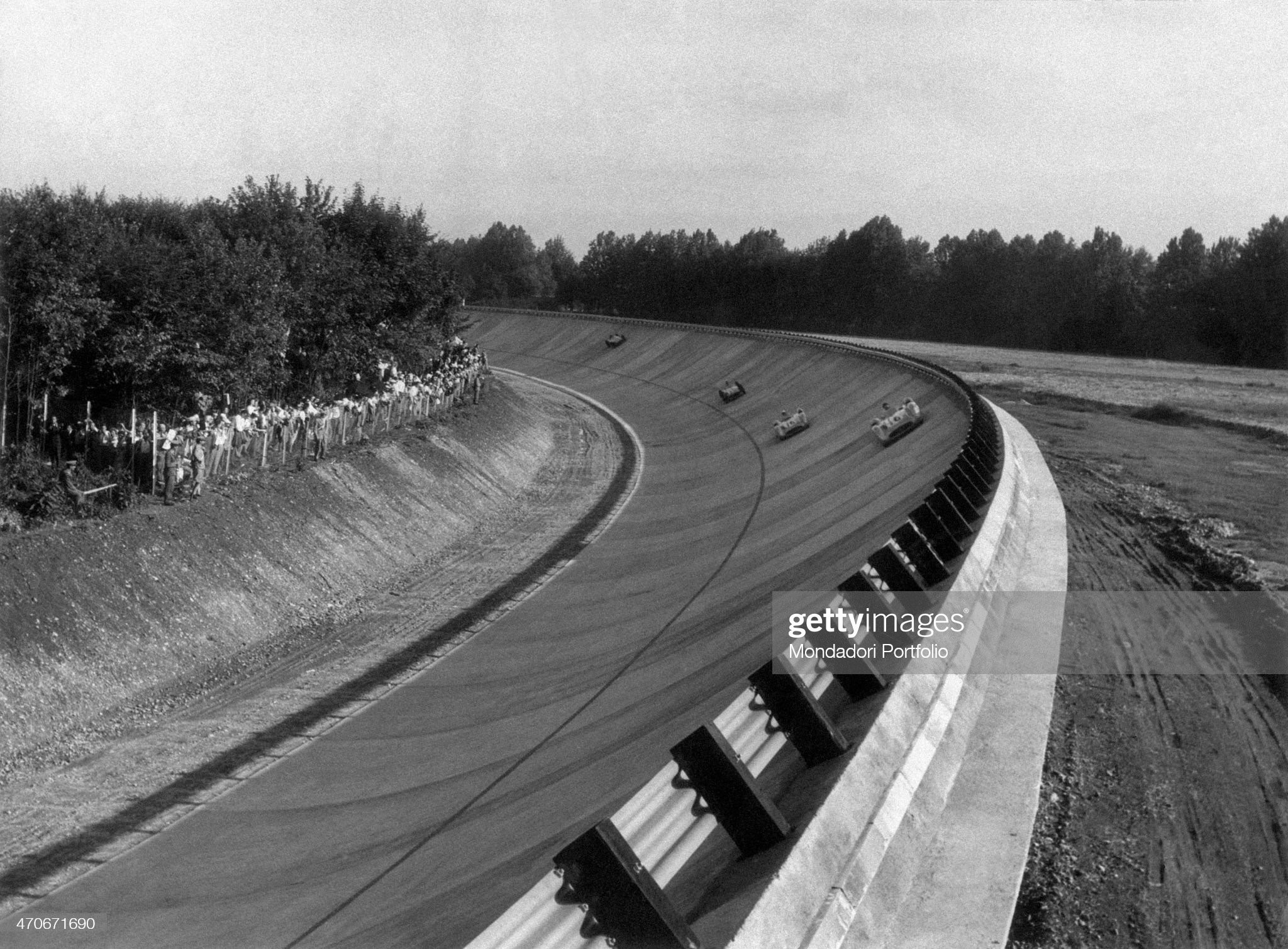
British racing driver Stirling Moss on a racing car Mercedes Benz W196 bearing the number 16 and Argentinian racing driver Juan Manuel Fangio on a racing car Mercedes Benz W196 bearing the number 18 running along a banked curve of the autodrome at 26th Italian Grand Prix. Monza, 11th September 1955. Photo by Emilio Ronchini \ Mondadori via Getty Images.
Some of the most famous and dangerous curves and straights of motorsport.
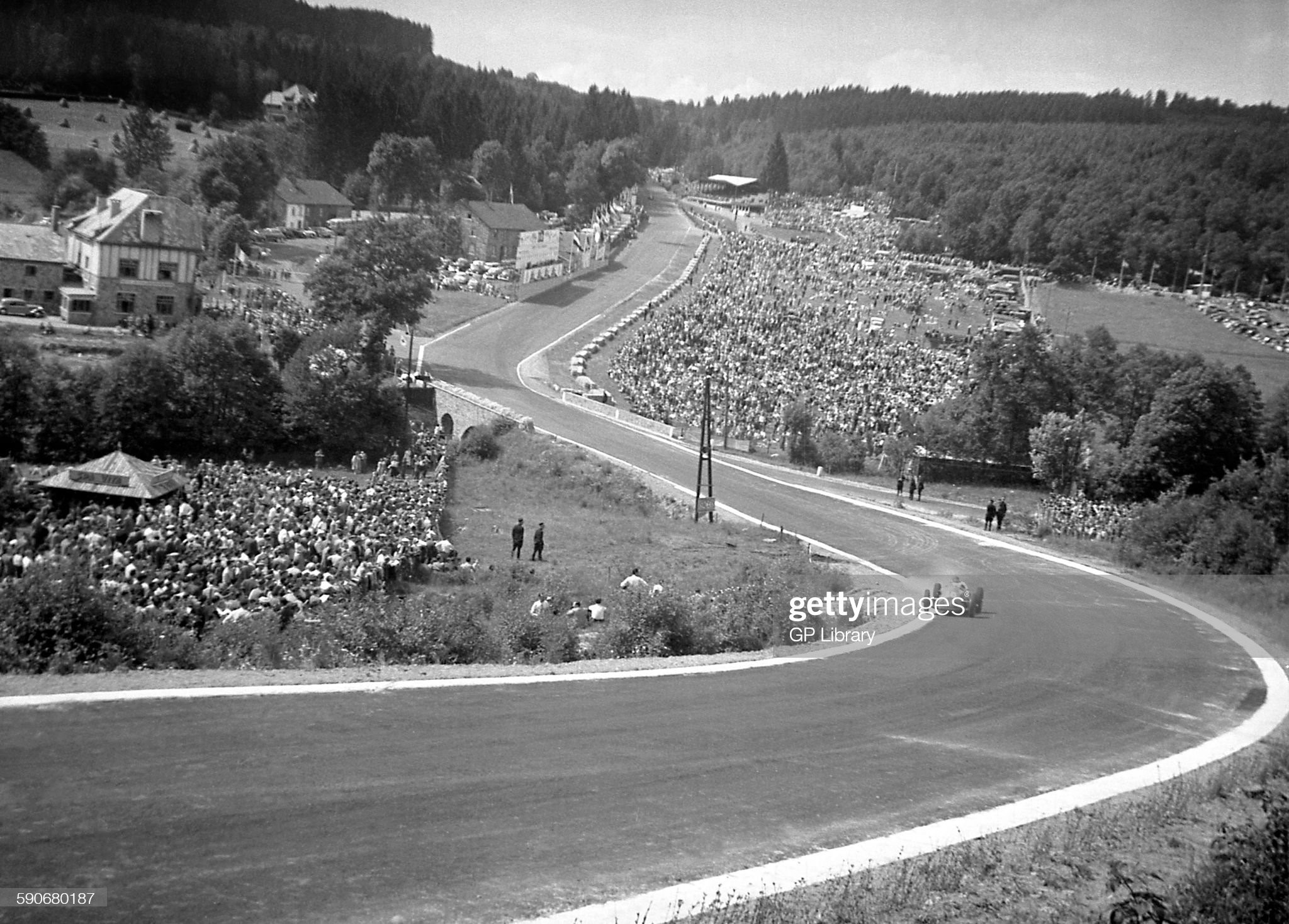
A car racing through Eau Rouge at the Belgian GP, Spa, 1950. Photo by GPLibrary / Universal Images Group via Getty Images.
The Eau Rouge recalled the most legendary features of the circuits that host or have hosted the Formula 1 GP
Motorsport, in addition to F1, has been made known not only by drivers and cars, but also by many top-level racetracks. In particular, some curves and straights in which memorable pages have been written. The variation projects of the Eau Rouge and Raidillon stretchs in the Spa circuit open the discussion on the most epic stretchs. Here are some of the most famous.
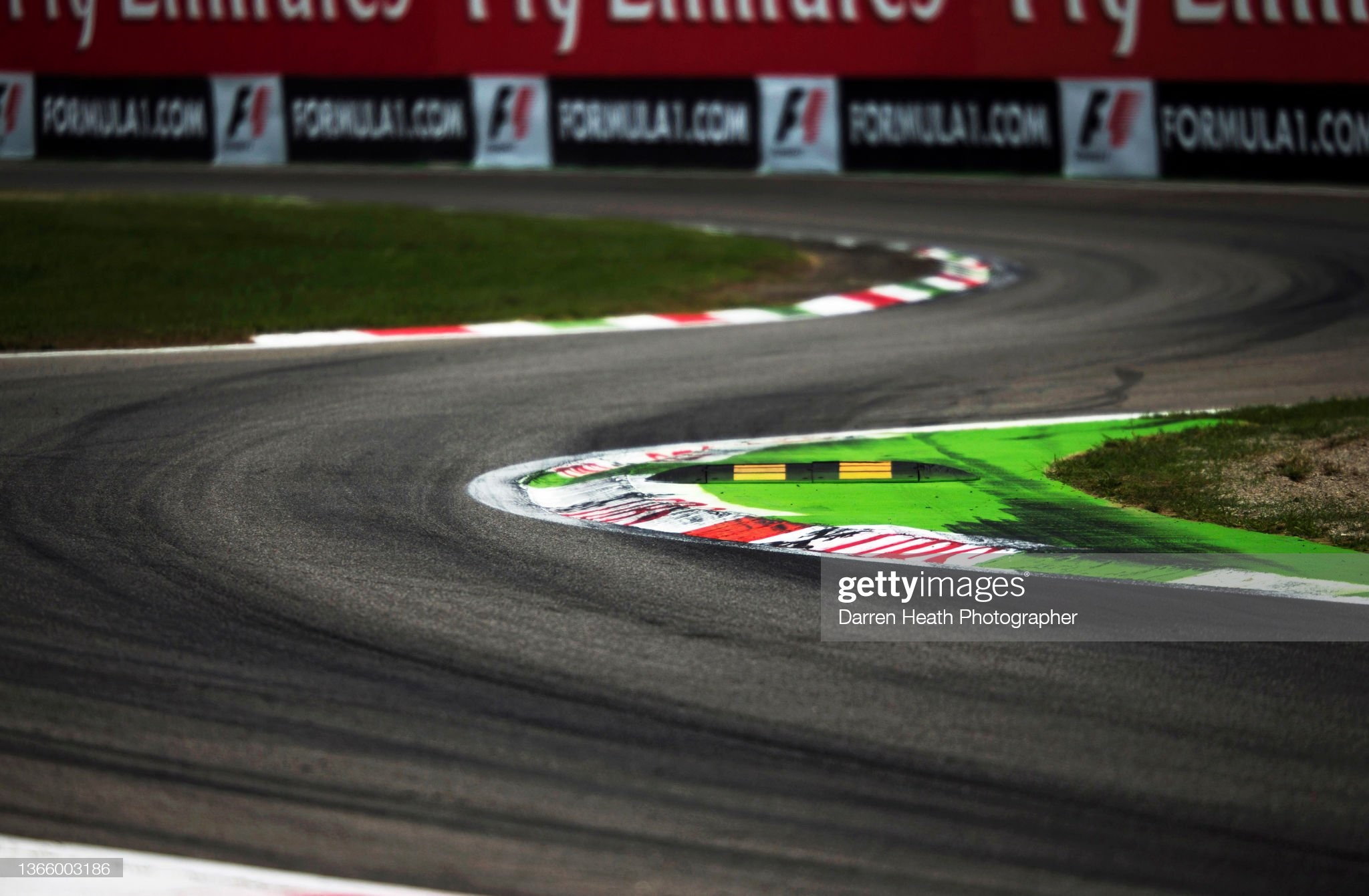
The Monza Circuit's Turn Nine and Ten, Variante Ascari chicane, sausage kerb and red, white and green Italian flag painted colour way and Formula One car tyre tracks, during the 2013 Italian Grand Prix, Autodromo Nazionale di Monza, Italy, on the 8th September 2013. Photo by Darren Heath / Getty Images.
The first variant, a completely dangerous modification
The deadly funnel of Monza: also known as the Goodyear variant, until the end of the nineties it was a double left-right curve, then in the 2000s the mirror change, with a very tight change of direction, which can cause many problems during the races: whoever chooses the wrong trajectory is forced to climb the high curbs of the Variante or to cut it completely. In Formula 1 it was the scene of several incidents, such as that of Verstappen.
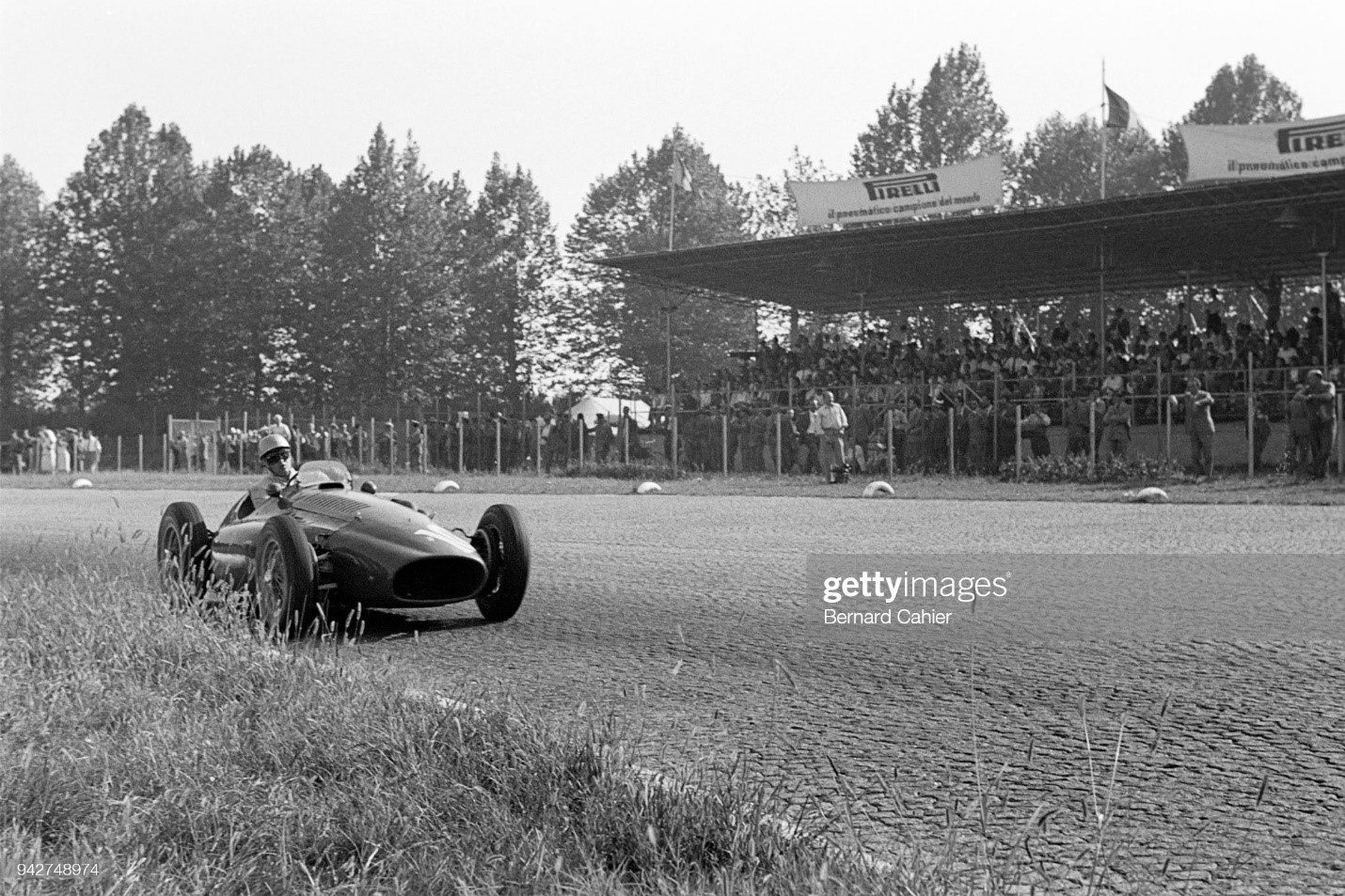
Umberto Maglioli, Ferrari 553, Grand Prix of Italy, Autodromo Nazionale Monza, 13 September 1953. Umberto Maglioli driving through the cobbelstone covered Parabolica curve in Monza. Photo by Bernard Cahier / Getty Images.
The Parabolica, the legend of Monza
Named after Michele Alboreto, it’s a curve to the right with a variable radius that can be reached at full speed from the straight following the Variante Ascari, with a spin with unpredictable consequences.
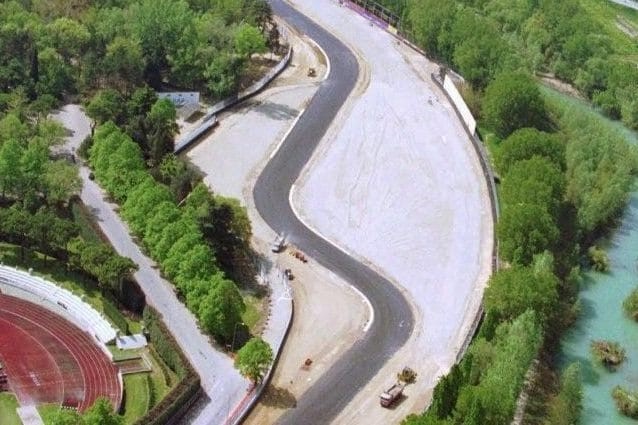
Tamburello curve.
Tamburello: the dangerous “Russian roulette” of Imola
One of the most feared points, a left-hander to approach at full speed, it did not forgive the slightest mistake. Among the various accidents, that of Berger with Ferrari in 1989, where he was saved from the fire of his car.
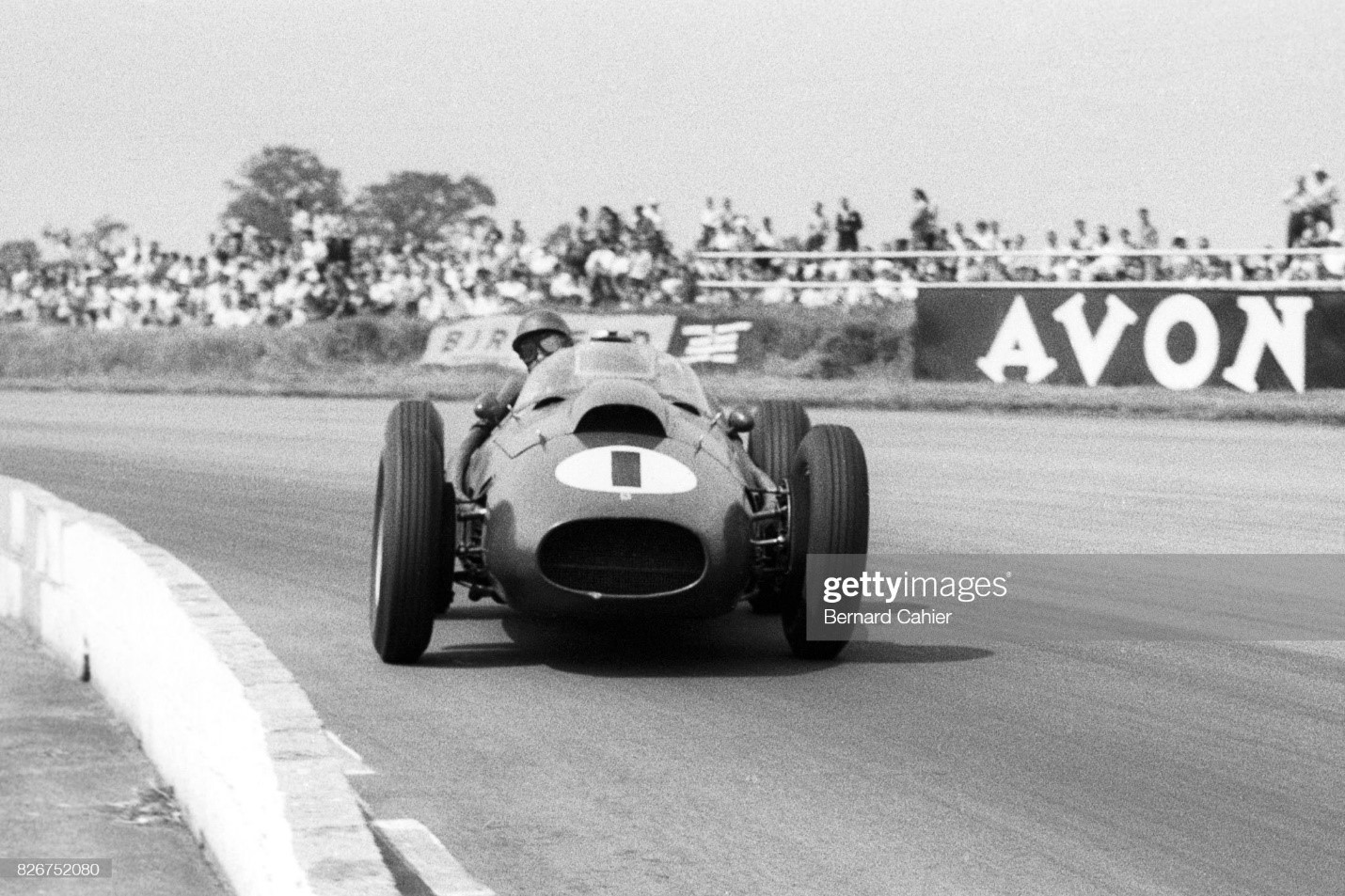
Peter Collins, Ferrari 246, Grand Prix of Great Britain, Silverstone, 19 July 1958. Peter Collins drifting his Ferrari 246 through Copse corner. Photo by Bernard Cahier / Getty Images.
The Copse corner, Silverstone launch pad
Today relegated to turn 9, it is a hair-on-the-stomach corner for a Formula 1 car, as you can easily touch seventh gear on the accelerator. Its width allows drivers to choose different ideal trajectories to find the best speed.
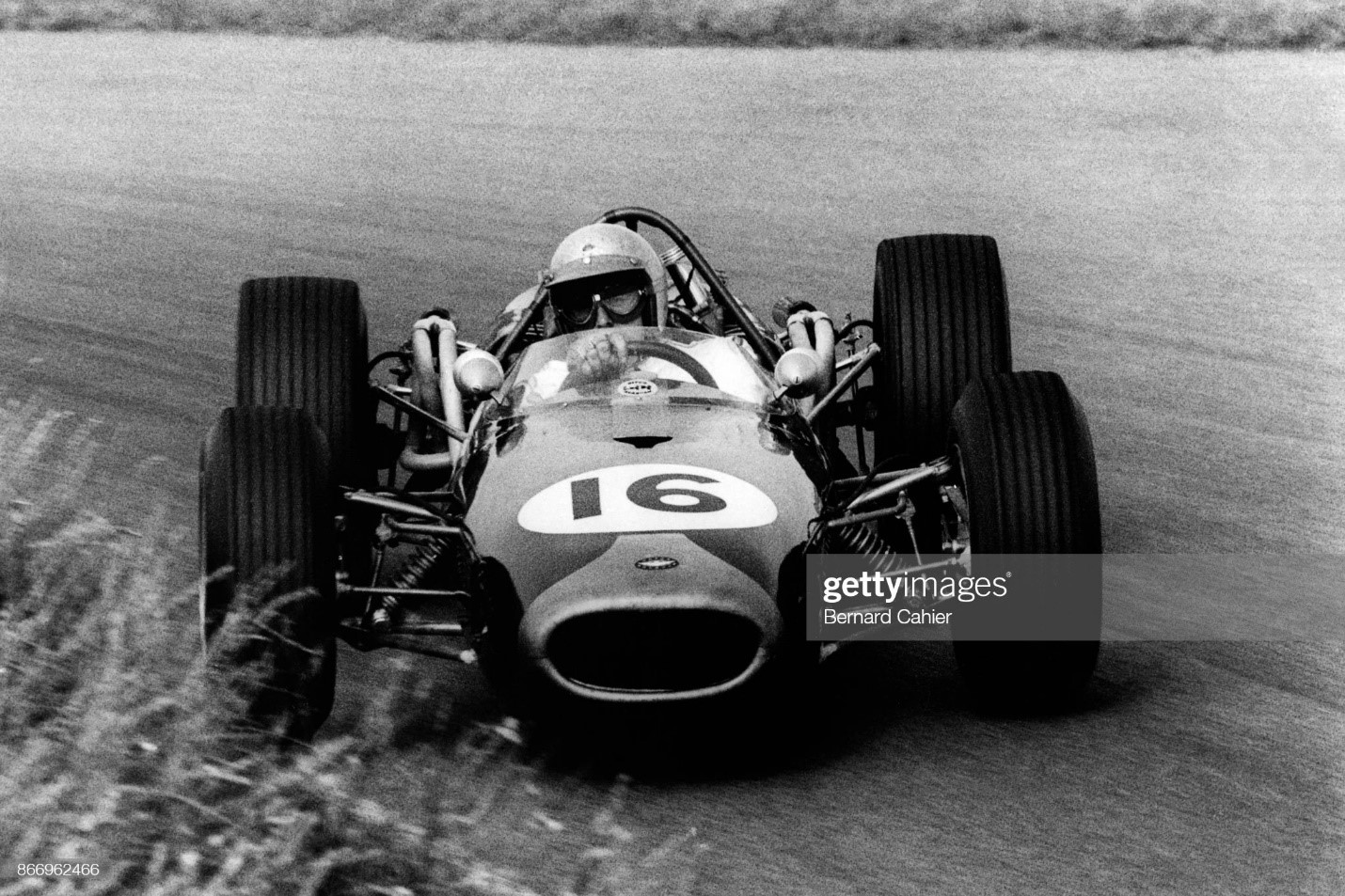
Jack Brabham, Brabham-Repco BT19, Grand Prix of the Netherlands, Circuit Park Zandvoort, 24 July 1966. A magnificent four wheel drift for Jack Brabham in the famous Tarzan curve on the Zandvoort circuit during the 1966 Grand Prix of Netherlands. Photo by Bernard Cahier / Getty Images.
The Tarzan curve
One of the most representative curves of Zandvoort. A 180° hairpin to be tackled at full speed, partially inclined on the outside. By choosing the right trajectory you can make splendid overtakings.
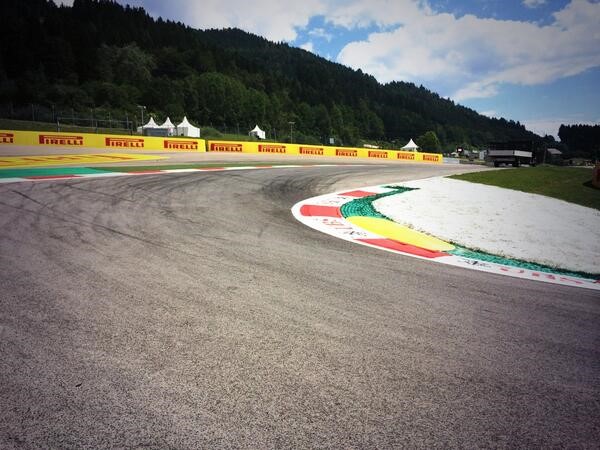
T2 the Remus Kurve is slowest point of circuit, uphill hairpin and one of best overtaking spots.
Remus Kurve, a fearsome stretch of the Red Bull Ring
A very narrow right-hand bend and, moreover, with a significant upward slope. With both the car and the bike a wrong gear shift can easily culminate in a disastrous highside. After the Remus, you cross a suggestive stretch of wood.
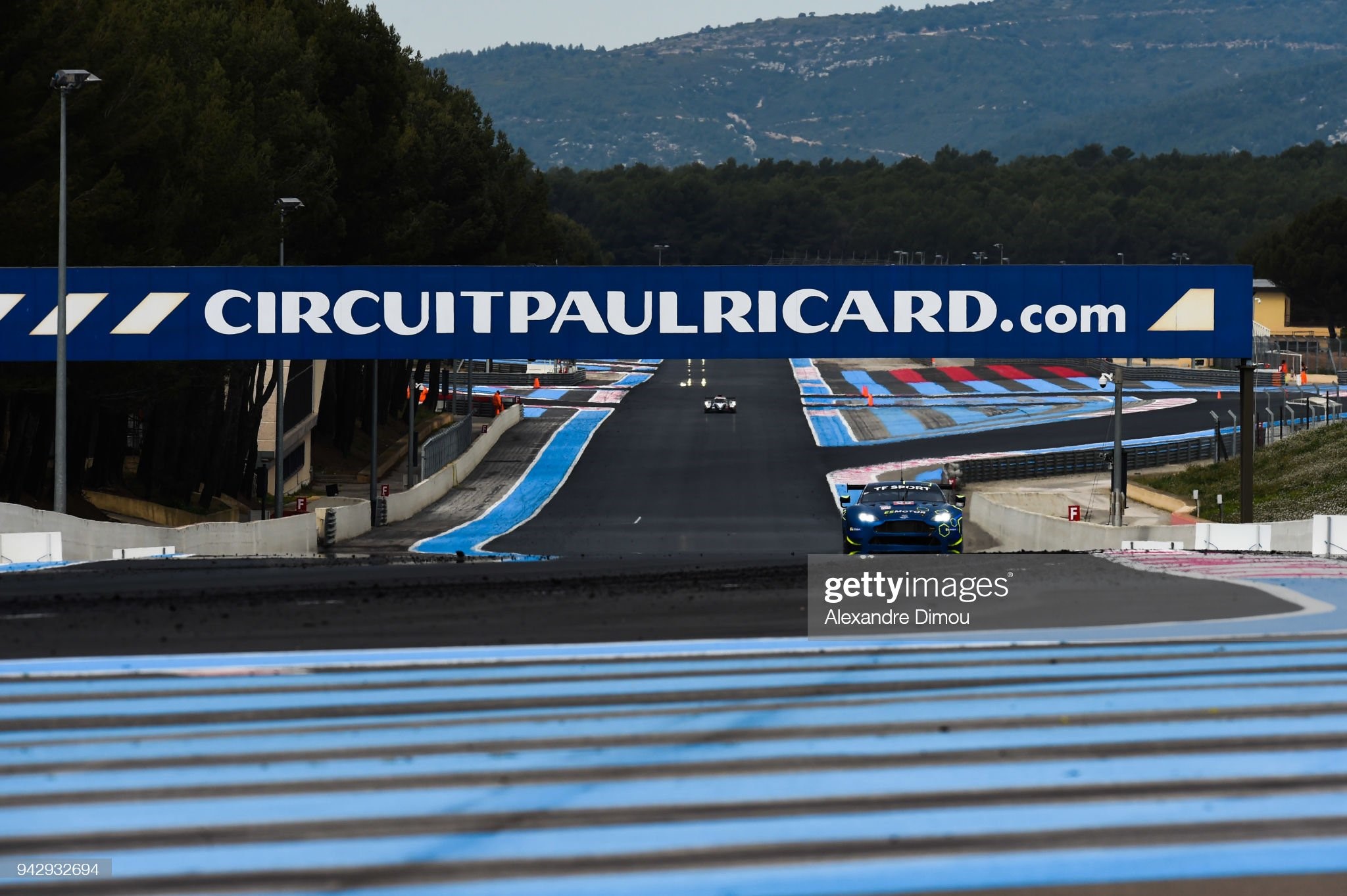
Circuit Paul Ricard Lane of Mistral during the Prologue du WEC at Circuit Paul Ricard on April 07, 2018 in Le Castellet, France. Photo by Alexandre Dimou / Icon Sport via Getty Images.
In Provence, the Mistral, the straight of Paul Ricard
Remained unchanged even after the massive renovations of the late 1990s-early 2000s, this straight allows drivers to reach top speeds in excess of 360 km/h.
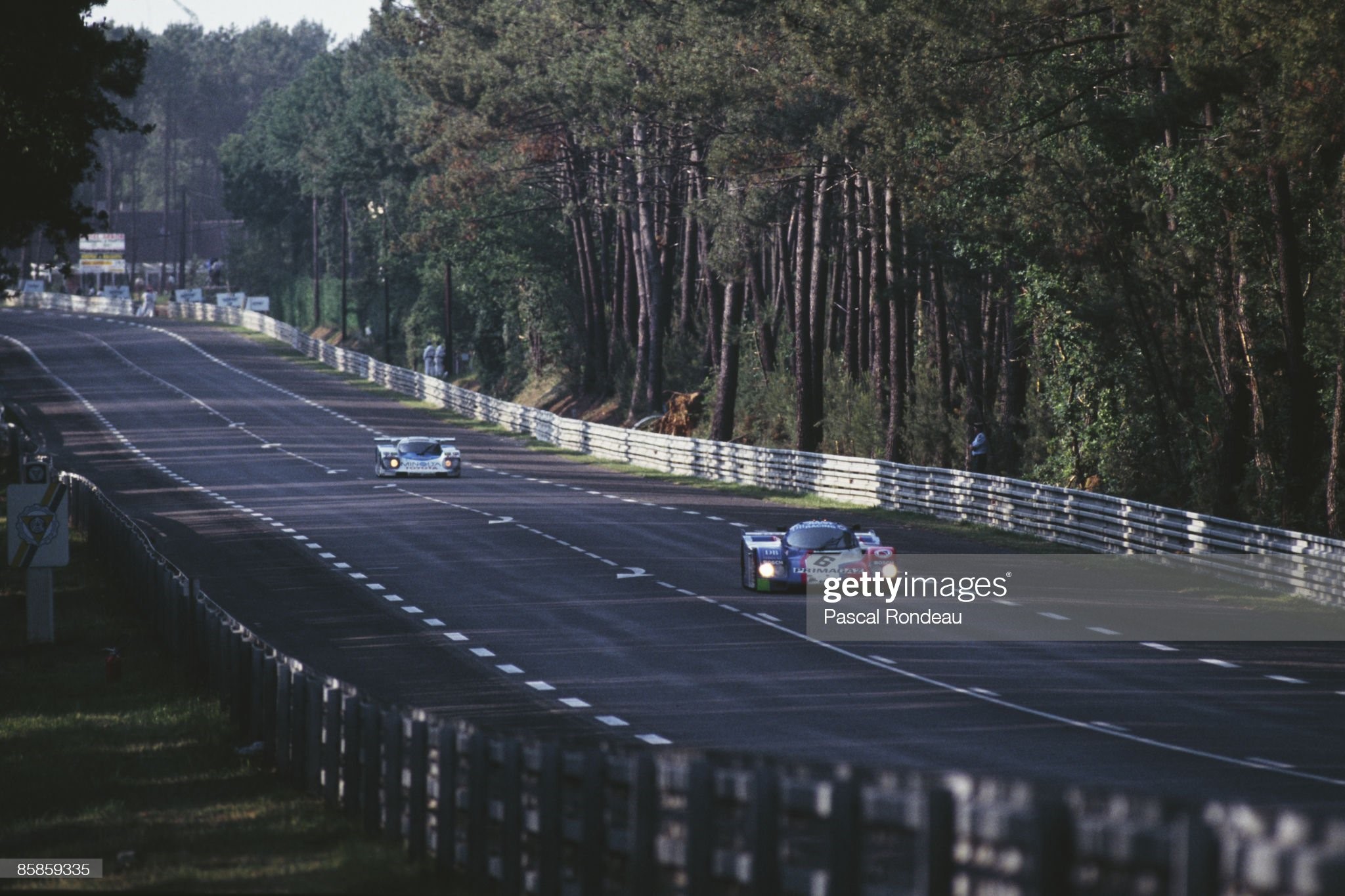
A Porsche 962C, of the Joest Porsche Racing team, leads a Toyota 90C-V down the Mulsanne straight during the 24 Hours of Le Mans, 16th-17th June 1990. Photo by Pascal Rondeau / Getty Images.
Le Mans, Mulsanne straight
One of the most representative points of the “historic” Le Mans circuit. Two chicanes were added in 1990 for safety reasons. Also known as the Mulsanne straight, with no chicane, it allowed the most experienced drivers to reach insane speeds.
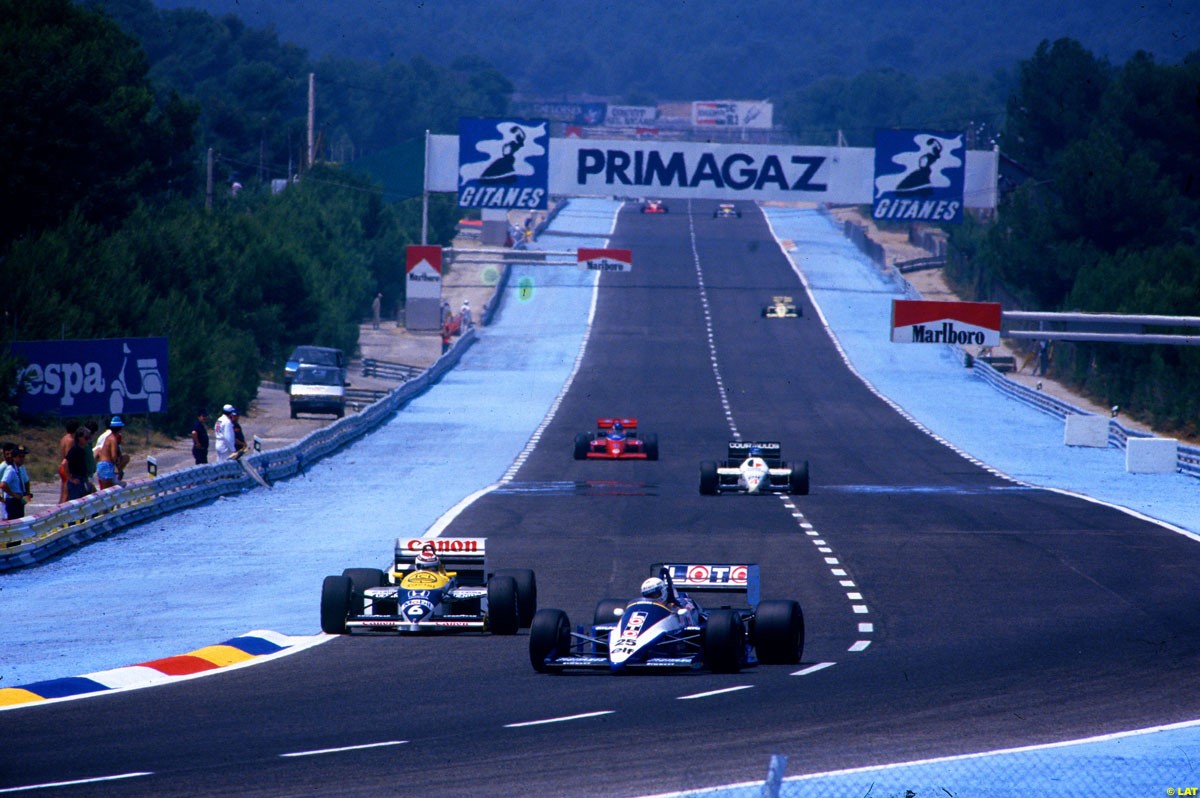
France: the Signes of the courage that was. June 23, 2018. By Riccardo Turcato.
When the F1 circus returns to Paul Ricard and when we talk about this track, two names immediately come to mind: Mistral and Signes. The drivers threw themselves at full speed along the long and infinite straight of the Mistral, making the exhausts blow just like the wind towards the Signes corner. Signes which was the point where, as Enzo Coloni said, you could see who had a steady heart and nerves. In fact, according to tradition, journalists and insiders went to position themselves inside the curve to see which driver, arriving from the Mistral, was the last to take his foot off the accelerator to set the curve and the last winding part of the route. The speeds were really high.
Clay Regazzoni tells in an article that Nelson Piquet arrived with his Brabham at 343 km per hour, shifted down from sixth to fifth, entered the curve at 310 km per hour and exited from it at 300 km/h! It was a point where the difference between the drivers was noticeable and the line between blaming the car not set up at its best and the awe on the part of the driver was very subtle.
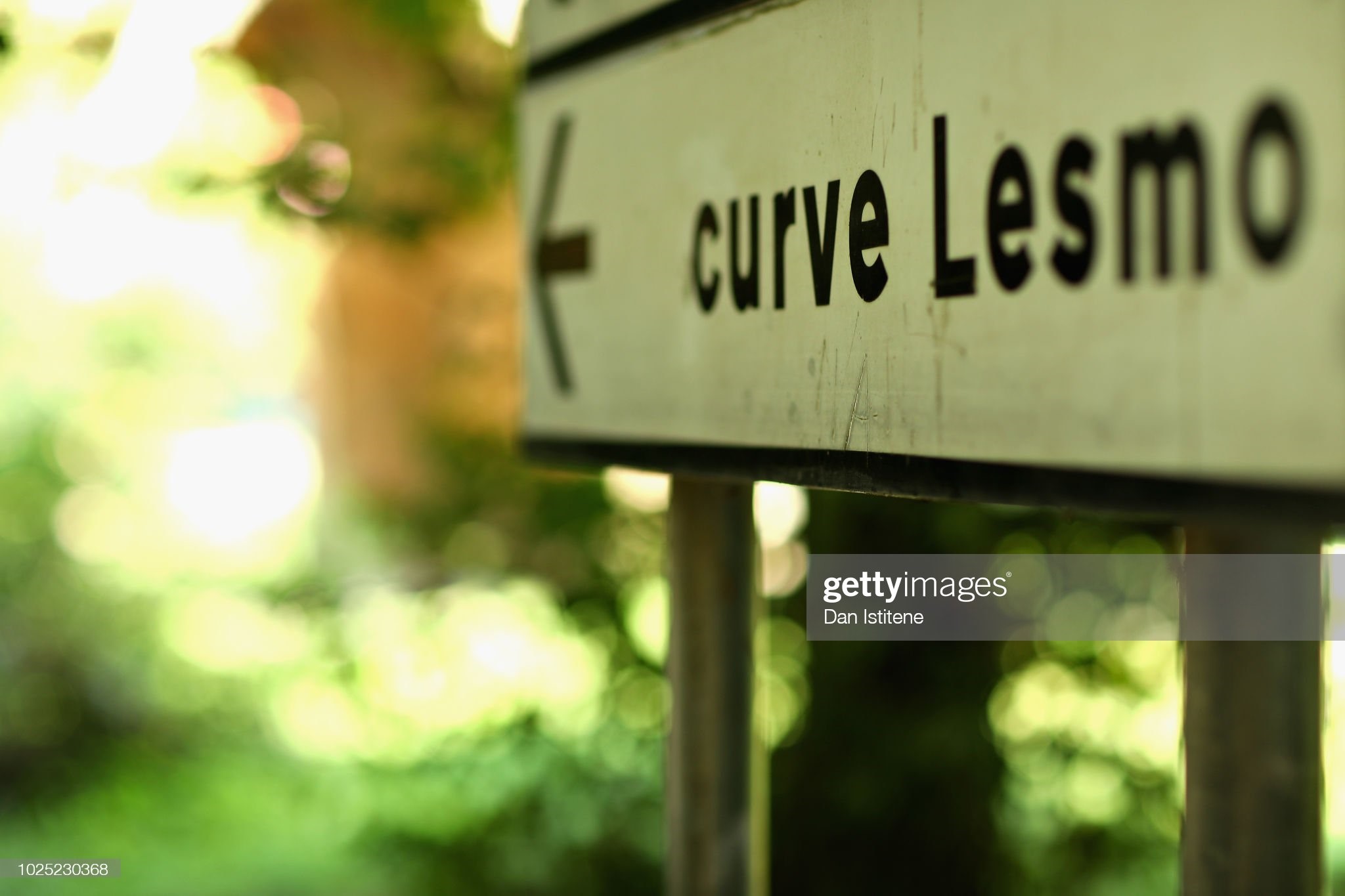
A general view of Curve Lesmo circuit signage during previews ahead of the Formula One Grand Prix of Italy at Autodromo di Monza on August 30, 2018 in Monza, Italy. Photo by Dan Istitene / Getty Images.
Signes, but we can say Eau Rouge, Lesmo, 130R in Suzuka and old companions, were all curves of courage.
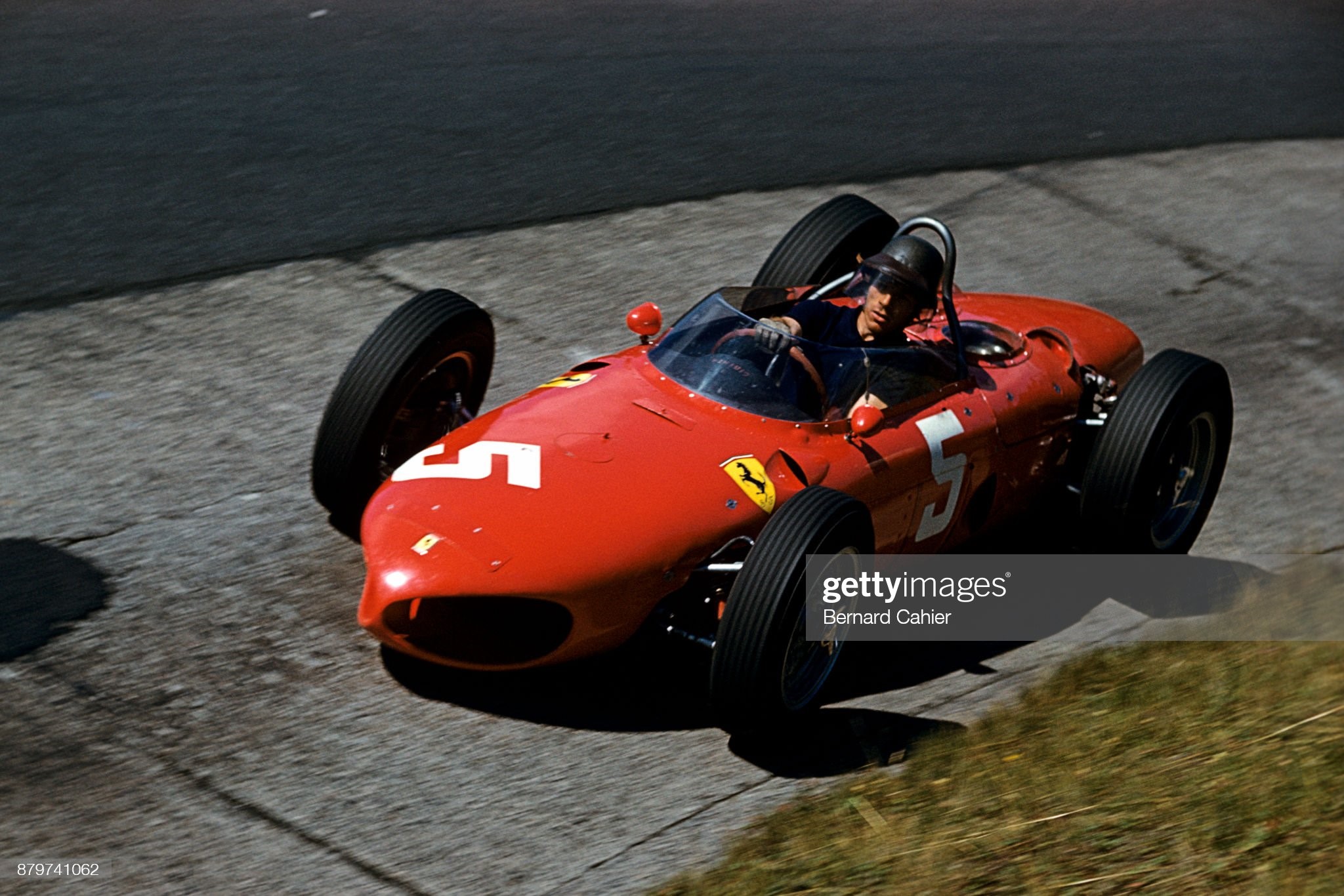
Richie Ginther's Ferrari 161 on the famous Karussel curve at the Nürburgring during the 1961 German Grand Prix. Photo by Bernard Cahier / Getty Images.
Track sections that could make the difference between one driver and another, perhaps even unconsciously in a personal challenge toward speed.
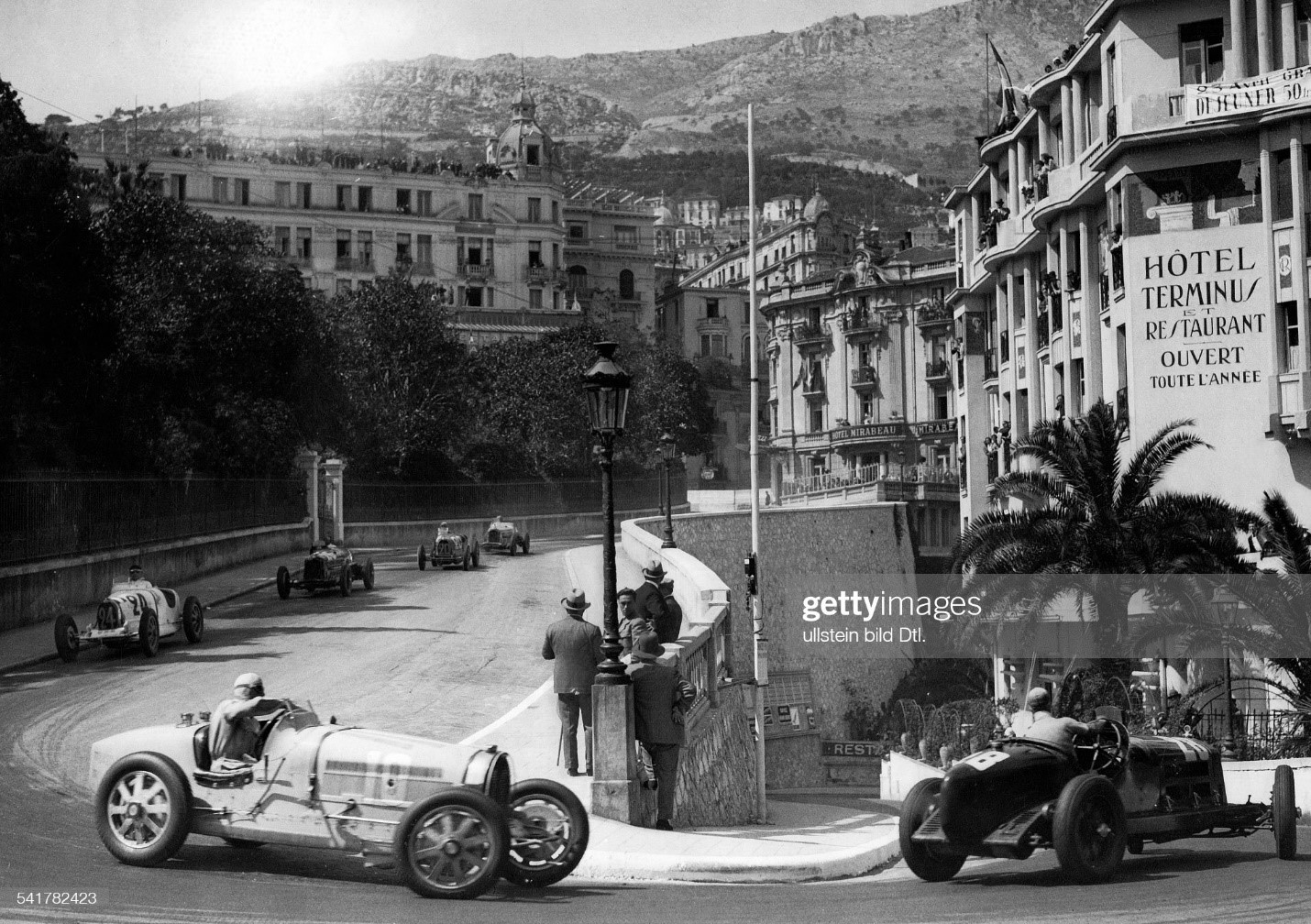
Difficult curve before the Casino of Monte Carlo, the race Grand Prix de Monaco, left: Rigatti, right: Alfa Romeo. Published by: 'Berliner Illustrirte Zeitung' 26.04.1933. Photo by Ullstein Bild via Getty Images.
Today we are no longer used to all this. Laps and laps in the simulator ensure that the settings are already pre-set and optimal from the first spin of the wheels on the track. Today we have chicanes that break the rhythm. We have drivers sunk in cockpits protected by a baby walker. We have tires not to wear out and engines to preserve. We have the feeling, at times, that we are losing the courage that was.
Videos


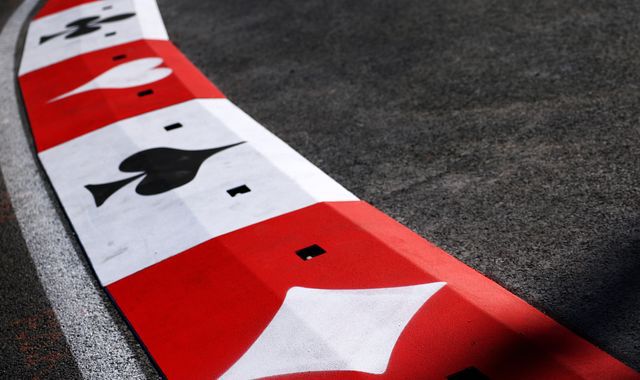
Comments
Authorize to comment